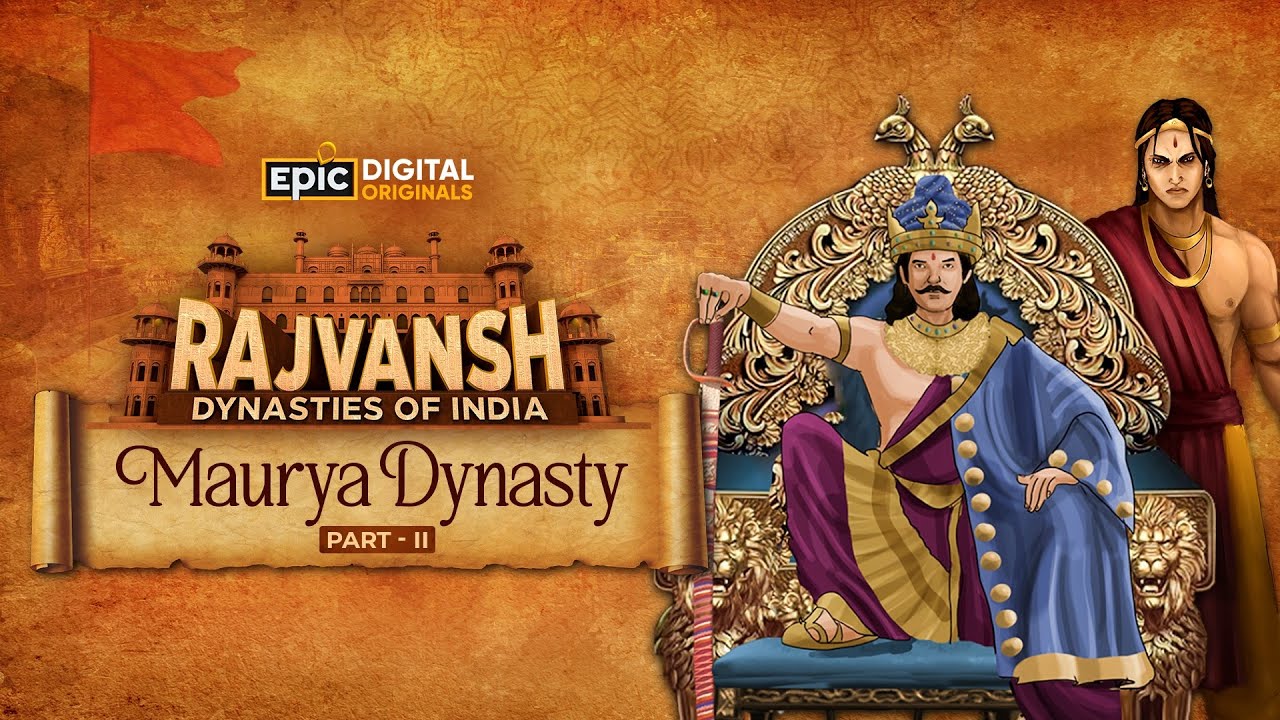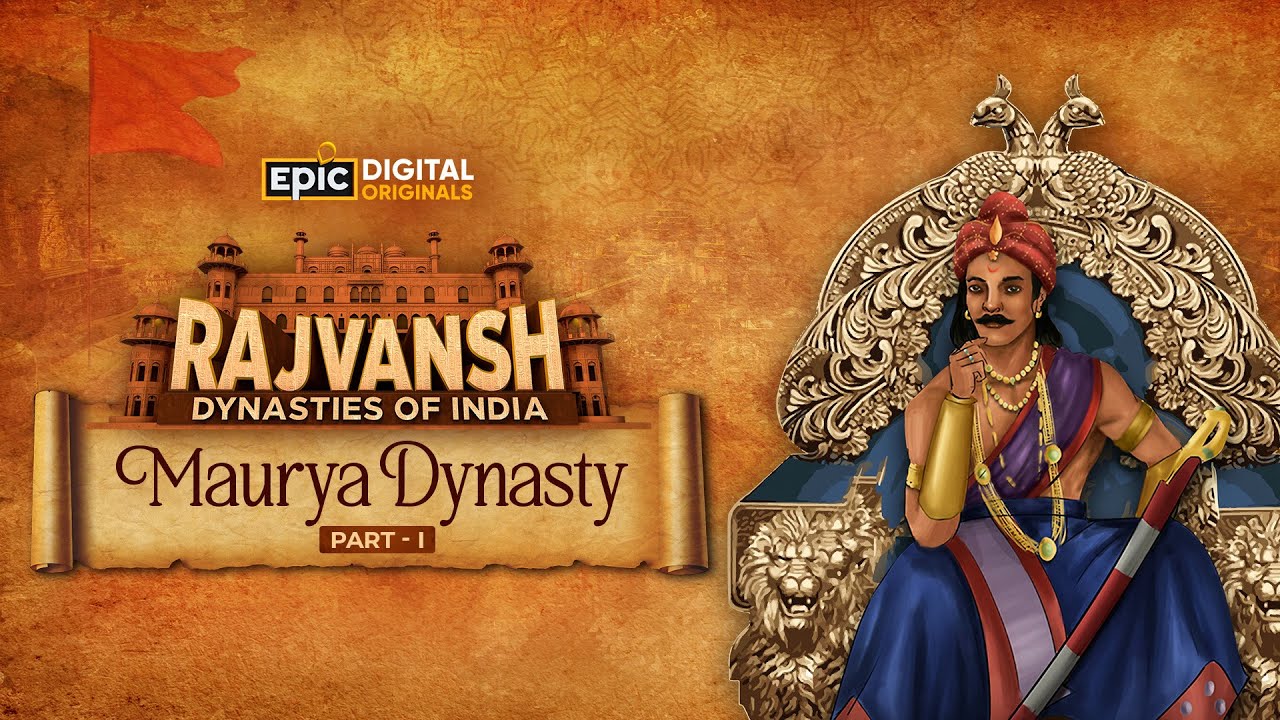Ashoka the Great - Rise of the Mauryan Empire Documentary
Summary
TLDRThis script narrates the turbulent Third Century BC, highlighting Alexander the Great's impact on India and the rise of the Mauryan Empire under Chandragupta Maurya. It focuses on Emperor Ashoka's transformation from a conqueror to a proponent of Buddhism, his efforts to spread peace and dharma, and his legacy in shaping Buddhism into a world religion. The video is sponsored by 'Imperator: Rome,' a grand strategy game by Paradox Interactive.
Takeaways
- 🏰 The Third Century BC was marked by significant warfare and the rise of powerful empires, including the Mauryan Empire in India and the Roman Empire in the Mediterranean.
- 🌐 Alexander the Great's conquests in India set the stage for the rise of the Mauryan Empire, despite his army's eventual retreat due to mutiny.
- 🤴 Chandragupta Maurya, the founder of the Mauryan Empire, had humble beginnings but used his knowledge of warfare and tactics to conquer the Nanda Empire and establish his rule.
- 🐘 Chandragupta made a strategic alliance with Seleucus, exchanging 500 war elephants for peace and a royal marriage, demonstrating his diplomatic acumen.
- 🛣️ The Mauryan Empire expanded under Bindusara, Chandragupta's successor, who continued his father's policies and ventured into the Deccan plateau.
- 👑 Ashoka, one of Bindusara's sons, ascended to the throne after a civil war and became a transformative ruler, influenced by his exposure to diverse cultures and Buddhism.
- 🗡️ Ashoka's reign was initially marked by conquest, including a brutal war with the Kingdom of Kalinga, which led to a profound change in his outlook on warfare and peace.
- 🕊️ Ashoka's remorse over the Kalinga war led him to embrace Buddhism and dedicate his rule to promoting peace, nonviolence, and moral behavior.
- 📜 Ashoka's edicts, inscribed on rocks and pillars, served as personal messages to his subjects, emphasizing his values and the importance of dharma, or righteous behavior.
- 🌳 Ashoka's commitment to the welfare of his people was evident in his infrastructure projects, such as planting trees for shade and digging wells for travelers.
- 🌏 Ashoka's efforts to spread Buddhism beyond India included sending missionaries to various regions, contributing to the religion's global reach.
Q & A
What was the historical context of the Third Century BC mentioned in the script?
-The Third Century BC was a period of intense violence and warfare, marked by the conquests of Alexander the Great and the subsequent conflicts among his successors, the rise of the Roman Empire, and the emergence of the Mauryan Empire in India.
What is the significance of the game 'Imperator: Rome' in the script?
-Imperator: Rome is a historical grand strategy game by Paradox Interactive, which is used in the script as a contextual background to the historical events discussed, allowing players to build and manage an empire during the same era.
Why did Alexander the Great halt his army at the Indus River?
-Alexander the Great halted his army at the Indus River to demand submission from two rival kings in the region, Omphis and Porus, as part of his conquest of India.
How did Chandragupta Maurya establish his empire?
-Chandragupta Maurya established his empire by initially attacking the Nanda Empire's capital, then changing tactics to conquer the northwestern lands weakened by Alexander, and eventually cutting off supplies to the capital, leading to the fall of the Nanda dynasty.
What was the outcome of the battle between Alexander the Great and Porus at the Hydaspes River?
-Alexander the Great won the climactic battle against Porus at the Hydaspes River, despite Porus's resistance.
What was the role of Ashoka's wife, Devi, in his conversion to Buddhism?
-Devi, a member of the Sakya clan and likely a Buddhist, influenced Ashoka and bore him two children, Mahendra and Sanghamitra, which may have contributed to his eventual conversion to Buddhism.
How did Ashoka's reign change after the Kalinga war?
-After the Kalinga war, Ashoka felt deep remorse for the devastation caused, leading to a change in his policy towards nonviolence and the adoption of Buddhism, focusing on spreading peace and moral behavior.
What was the impact of Ashoka's conversion to Buddhism on his rule and the empire?
-Ashoka's conversion to Buddhism led him to focus on the welfare of his subjects, promoting nonviolence, moral behavior, and the spread of Buddhist teachings, while maintaining a strong and efficient rule over the empire.
How did Ashoka's approach to religious tolerance reflect in his edicts?
-Ashoka's approach to religious tolerance was evident in his edicts, where he discouraged blaming other religions or over-glorifying one's own, emphasizing the importance of respecting all faiths.
What was the purpose of the third Buddhist council held at Pataliputra?
-The purpose of the third Buddhist council was to send teams of bhikshus (Buddhist monks) to foreign kingdoms to spread the teachings of the Buddha, marking a significant step in the global spread of Buddhism.
What legacy did Ashoka leave behind in terms of the spread of Buddhism?
-Ashoka's legacy in the spread of Buddhism includes the conversion of Sri Lanka to Buddhism through his son Mahendra's mission, and the broader dissemination of Buddhist teachings to various regions, contributing to its status as a world religion.
Outlines

This section is available to paid users only. Please upgrade to access this part.
Upgrade NowMindmap

This section is available to paid users only. Please upgrade to access this part.
Upgrade NowKeywords

This section is available to paid users only. Please upgrade to access this part.
Upgrade NowHighlights

This section is available to paid users only. Please upgrade to access this part.
Upgrade NowTranscripts

This section is available to paid users only. Please upgrade to access this part.
Upgrade NowBrowse More Related Video

Ancient History of India Series | Lecture 9: Rise of Mauryan Empire | GS History by Aadesh | UPSC

The Maurya Empire: The Mightiest Civilization India Has Ever Known

Why did The Maurya Empire Collapse? - The History of Largest Empire in Ancient India

Mauryan Empire - Art & Architecture - Mauryan Administration - Edicts of Ashoka

Maurya Dynasty Part 2 | Rajvansh: Dynasties Of India | Full Episode | Ancient Indian History | Epic

Maurya Dynasty Part 1 | Rajvansh: Dynasties Of India | Full Episode | Ancient Indian History | Epic
5.0 / 5 (0 votes)